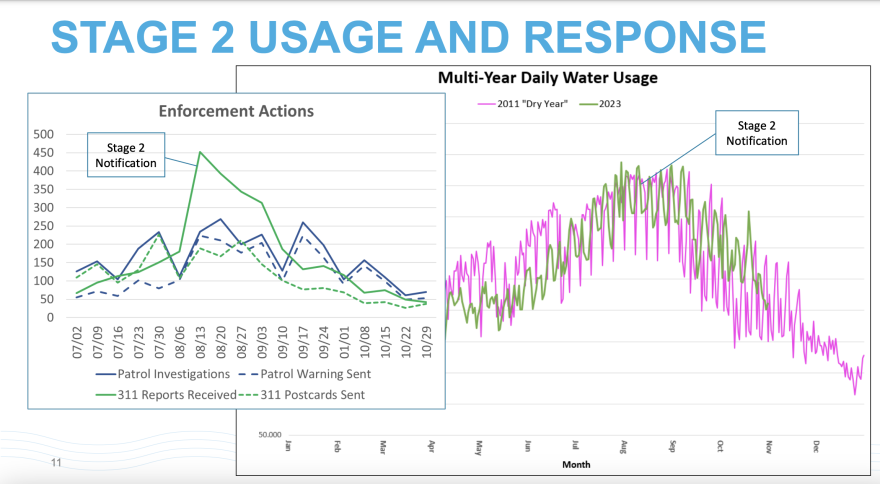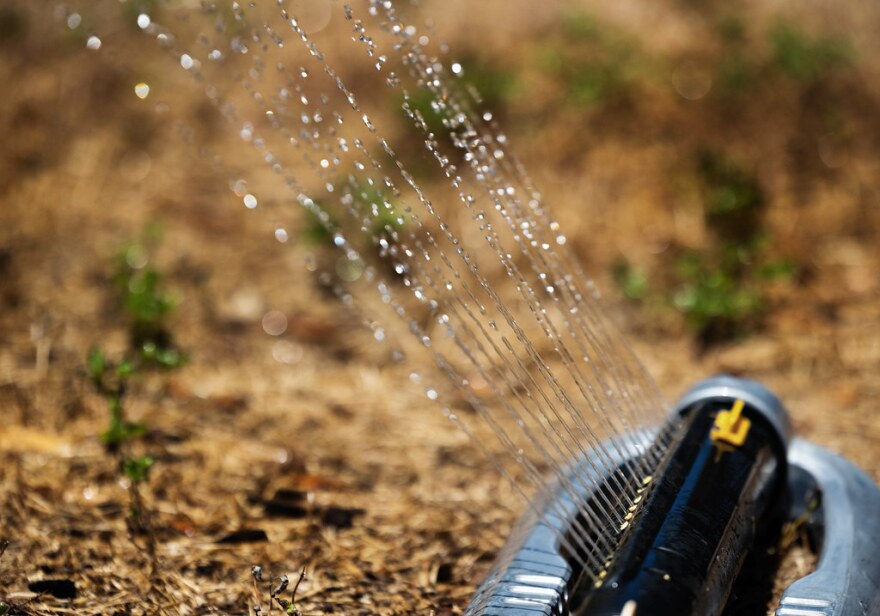On Aug. 15, Austin was 39 days into its longest triple-digit heat wave ever recorded. The extreme heat had created a “climate feedback loop," locking in the worst drought the city has seen in 113 years. By mid-August reservoirs on the Colorado River, which provide the city with water, were 46% full and dropping.
Following a protocol established with the Lower Colorado River Authority and state environmental regulators, Austin declared Stage 2 drought restrictions to decrease the amount of water the city used and conserve water in those Highland Lake reservoirs.
The rules put new limits on how people and businesses were allowed to use water, including restricting automatic lawn irrigation to once a week.
But Austin’s water use continued unabated.
That was the message Austin Water conservation manager Kevin Kluge delivered Nov. 30 when he updated the city’s Integrated Water Resource Planning Community Task Force on this year’s drought response.
After restrictions were announced, “it was still very hot and dry and people continued to try to water their lawns. So that continued for another month or so,” said Kluge, sharing a graph from a slide deck that showed city water consumption before and after Aug. 15.
“Our best efforts did not push water use down,” he said.
That water use continued despite a surge in 311 complaints about people violating the new conservation rules.
A graph shared at the meeting showed around 450 complaints filed with the city in the week after drought restrictions were announced, up from under 200 filed during the first week of August. The city appears to have received more than 300 complaints each week into early September.

When people report watering violations, the city first sends a postcard to the potential violator. But far fewer postcards were sent out in August than reports received. Fluge said that could have been due to duplicate and erroneous reports.
If the city continues to receive complaints about someone violating water restrictions after it has sent out postcards, it will send someone to investigate the violation and potentially issue fines.
While the presentation showed no obvious impact from the announcement of Stage 2 restrictions, Kluge said he believed they still helped.
“We’re imagining that it tamped down that spike [in water use] that might have been,” he said. ”Next slide.”
But his presentation prompted questions from the task force about the effectiveness of city enforcement of water restrictions.
“If we're not moving the needle on reducing the usage in the worst drought we've had in a very long time," task force member Paul DiFiore said, “you might need a stronger tool in the toolbox for getting the worst offenders to reduce their water usage.”
While Austin, like many Texas cities, relies mainly on voluntary compliance to try to conserve water during drought, some have questioned the effectiveness of that approach.
El Paso, considered a success story when it comes to conservation, has long made violating water rules a misdemeanor criminal offense. Though officials say they're considering a change, they also say aggressively fining repeat violators is one way to reduce water use.
The City of Austin will have an opportunity to rethink how it deals with water violations as it revamps its drought contingency plan, a process that will last until May 20.
The city is hosting an online meeting to seek public input on overhauling Austin’s drought conservation policies Tuesday at 6 p.m.

















